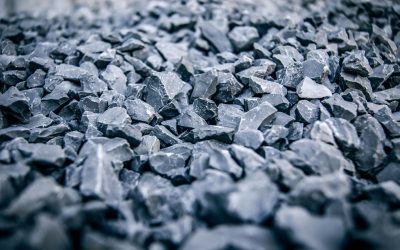In mineral processing, efficiency and sustainability are crucial. Dewatering screens, which remove excess water from mineral slurry, significantly improve processing speed, reduce operational costs, and enhance product quality.
Whether you’re optimizing current operations or exploring new solutions, dewatering screens offer essential benefits for modern mineral processing.
What is Mineral Processing?
Mineral processing involves isolating minerals from ores through physical and chemical methods. The process involves crushing, grinding, sizing, classifying,
concentrating, and dewatering. The goal is to produce products suitable for commercial, industrial, and other uses.
Solid-liquid separation, which extracts mineral-rich ores and fines (small particles of valuable minerals) from water, is a key component of mineral processing. It’s considered a critical step as it:
- Separates valuable minerals from the gangue (material without any commercial value) and other ore impurities, thereby improving ore concentration
- Eliminates impurities to produce final products of superior quality and composition
The isolated minerals are then processed in the next stage known as dewatering. This step focuses on removing the moisture content of the minerals to achieve the desired concentration levels before the products hit the market. The dewatering process uses mineral processing equipment, such as dewatering screens.
Dewatering Screens and Their Applications
A dewatering screen comprises a sturdy frame and a screen with openings for the liquid to pass through. Featuring a vibrating mechanism, it efficiently segregates solids from liquids. To optimize effectiveness, the speed of rotation, the angle of inclination, and other components of the machine are adjusted based on the properties of the feed material.
From mineral and ore processing to construction and waste management, dewatering screens demonstrate versatility in handling different materials, particle sizes, and moisture levels. They are available in customizable options to cater to specific operational needs.
The Benefits of Using Dewatering Screens
Dewatering screens are integral in industries requiring solid-liquid separation. They provide several benefits, including:
- Enhanced product quality: Moisture significantly impacts the usability of minerals. By minimizing moisture content through dewatering screens, industries can improve the overall quality of end-products and simplify their handling and transport procedures.
- Increased efficiency and throughput: Compared to traditional methods, these machines can handle high volumes of material, thus boosting overall efficiency, throughput, and productivity.
- Cost savings: Dewatering screens generally have lower energy consumption compared to other equipment, like filter presses and centrifuges, contributing to reduced production costs.
- Minimal environmental footprint: These machines minimize the ecological impact of industrial operations by promoting water recycling, decreasing the volume of wastewater needing treatment, and ensuring compliance with environmental standards.
Learn more about sustainable mining practices.
The Ortner: A Multi-Functional Solution for Mineral Dewatering and Classification
The Ortner is an efficient solution for dewatering various minerals and ores. Lightweight and compact, it can easily be transported and installed. In addition, it provides greater capacity, efficiency, and flexibility as it allows for various adjustments to meet different sand specifications properties.
The Ortner is not only designed for dewatering but also for removing fines, classifying, and rinsing sand and other fine materials, making it an all-in-one and cost-effective machine. Compared with other dewatering and classifying equipment, it boasts less power and water consumption and requires minimal maintenance, offering substantial cost savings.
To learn more about the operational benefits of the Ortner, contact us today.


